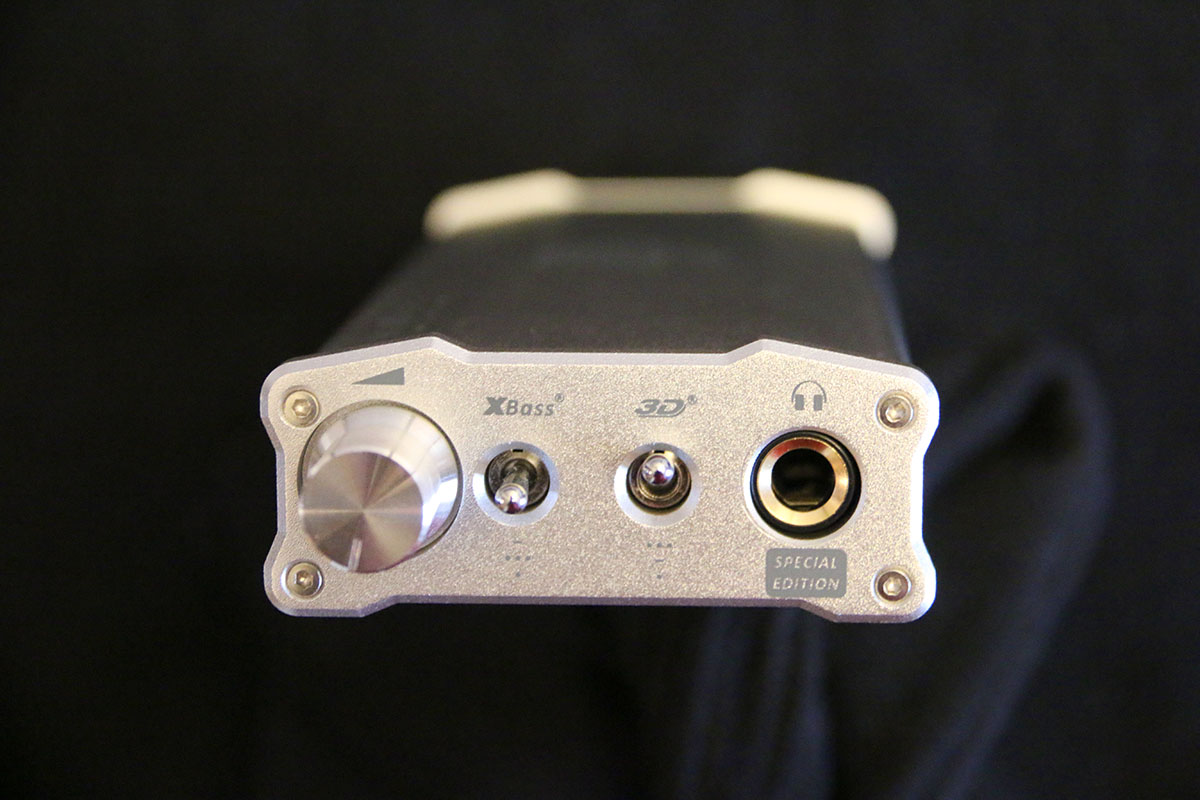
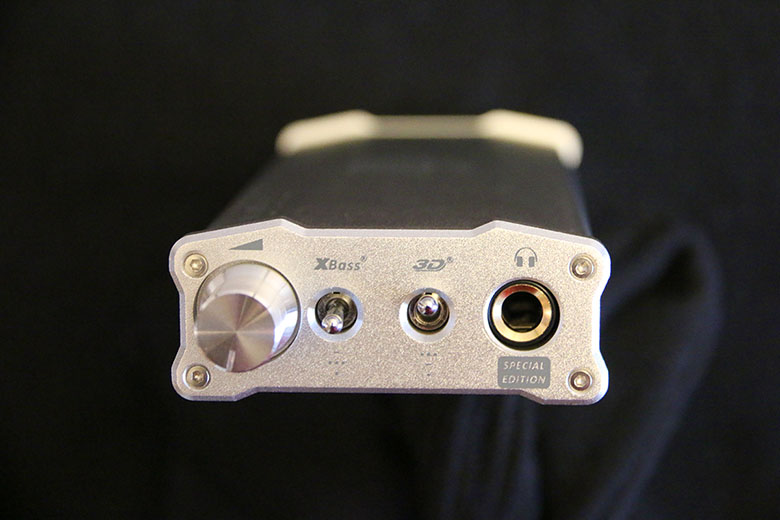
The Master Switch


The Master Switch
It can often be a challenge to go for an audio company that prizes rigorous engineering over marketing flair. Judging by their website and their staid, sober presence on social media, you might be forgiven for bypassing iFi Audio in favor of flashier companies like Schiit. That would be a mistake. They sent us their latest mini amplifier to test out, and we’ll say this for it: it’s got some surprising depth. In this review, we break down the micro iCAN SE’s sound, design, packaging and accessories, specs and more. To see alternatives, read our list of the best headphone amps.
The iFi Audio micro iCAN SE amplifier (it’s pronounced eye-fi, in case you’re wondering) is a Class A solid-stage amplifier. The circuitry, coupled with the aforementioned Direct Drive tech (a circuit layout that results in increased transparency and a very low output impedance), the bass boost function, and the 3D stereo enhancer, meant that we quickly became addicted to the sound this little beauty gave us.
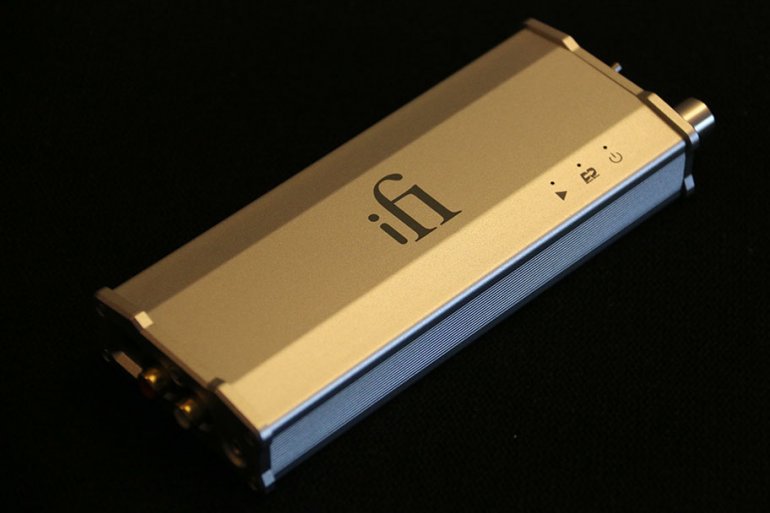
While it didn’t have the outright warmth and character of something like the Hafler HA75 (full review here), there was definitely plenty of character to the audio we put through it. It had real weight and heft: the bass always felt full and complete, even when we supercharged it with the surprisingly excellent bass boost. We found that the greatest improvement it gave to our basic headphone sound was in the mids, where it really filled out some of the gaps and brought the details to the fore. Very occasionally, when there was a lot going on in a particular mix, we detected a little bit of muddiness at the low end as the amp struggled to handle all the bass frequencies, but this didn’t occur too often. The amplifier also includes a 3D stereo enhancer effect. This didn’t make a massive difference, but there was definitely an audible change when we flicked it up to the max. In fact, we were so pleased by the combination of maximum bass boost and maximum stereo that we mostly just left it there.
The closest comparison we could make to the sound was actually a portable amp: the OPPO HA-2SE, and not just because it has a similar suffix. It doesn’t have as much emphasis on the tube character, but it makes up for it with clarity, and has a bass boost function of similar quality. (It also has its own design issues, like a nasty leather cover that makes it look kind of cheap, but that’s neither here nor there). It used to be that the HA-2SE was identically priced to the iCAN, at $299, but that’s no longer the case, and it’s actually quite hard to find cheap versions of the old HA-2SE. For now, you can probably stick with the iCAN.
We tested this amplifier with a variety of different headphones, including our standard 250 ohm Beyerdynamic Amiron Homes (full review here). This is a fairly neutral pair of headphones, and while the app had no problem driving them, it did reveal a slight issue with the highs. They could very occasionally be harsh, even slightly fatiguing, with the sibilance of many instruments brought right to the front. It’s not a massive problem, and the creative EQ solve things, but it is worth bearing in mind that, despite the solid level of detail, the amplifier’s sound is far from perfect. And while we’re talking about testing, the amplifier predictably responded best to the aforementioned iDAC2. They might not be able to stack - more on this below - but they work extremely well next to each other, the DAC giving its amp partner a little bit of an extra sharpening and poise.
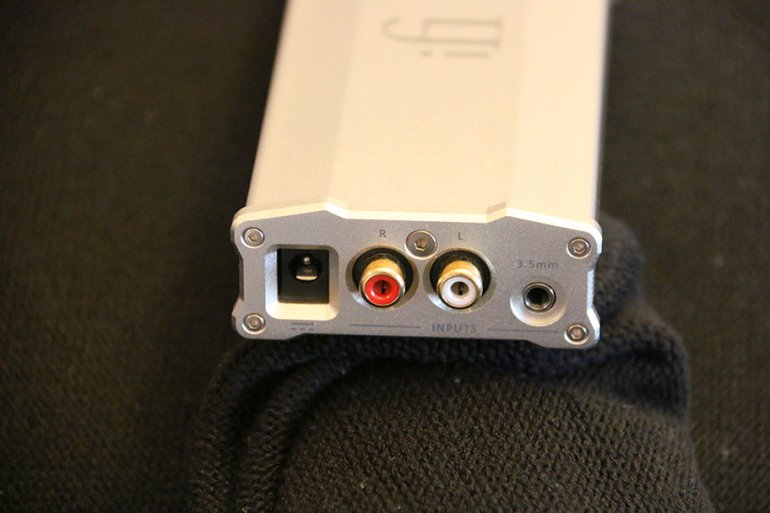
The SE in iCAN SE stands for Special Edition, and it’s the upgraded version of the original iCAN, one which has, as iFi put it, been “specially tuned”. We admit, we’ve never heard the original, but design-wise, there doesn’t seem to be a huge amount of difference between the two. And for the most part, the strange sci-fi design works well. You know what the iCAN SE makes us think of? It makes us think of spaceship coffins. You know the ones we’re talking about. In a science fiction movie, whenever some poor bastard gets horribly murdered by an alien or gets too close to the positron core whatever, his shipmates package up his body in a futuristic box and jettison it into the void. That’s what the iCAN SE looks like. One of those boxes. Either that, or a chocolate bar designed by a steampunk Willy Wonka. Whichever image you prefer, you can tell from the photos that there are very few headphone amps that have a shape this eye-catching. The only other one we could think of that we could recognise at a distance would be the Schiit Magni 3 (full review here). Coincidentally, that amp is not only cheaper than the $299 iCAN SE, but also a lot better.
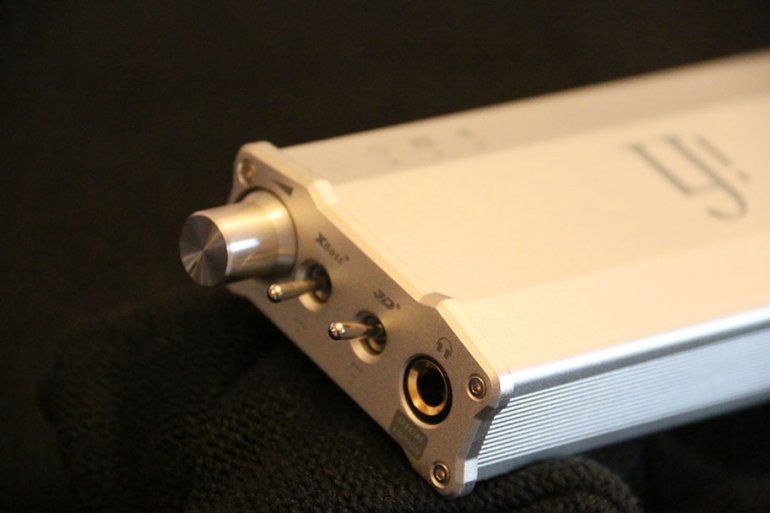
The amplifier is a slim, light silver box around the size of a couple of cigarette packets stacked in tandem, with multiple controls located on either end. The one we’ll refer to as the business end is where the main volume pot sits: a pleasing brushed-metal cylinder with a nice weight to it. On the other side, you’ve got a 6.3mm headphone jack, and in between them, two switches – one to control the bass boost, and the other to control the 3D stereo effect. The build is light enough and small enough that you could theoretically take it on the road with you, which we liked. In practice, it would probably be a bit fiddly, but we appreciated the idea.
On the other side, you’ve got twin RCA inputs, a 3.5 mm input jack, and a socket for the power cable. There are a set of self-explanatory indicator lights on the top – one for power, one for the Direct Drive function, and another to indicate the presence of audio. We don’t quite understand why the Direct Drive needs its own indicator – it’s not like you can turn it off – but it doesn’t get in the way. On the bottom of the unit, there’s a gain switch, and this is where things get confusing. See, it’s more like gain switches, with four tiny, fiddly toggles that you have to flip in certain sequences to boost the gain by up to 24dB. It’s entirely possible that the demands of the internal layout meant that the gain switch couldn’t be located elsewhere, but it’s still fiddly to operate.
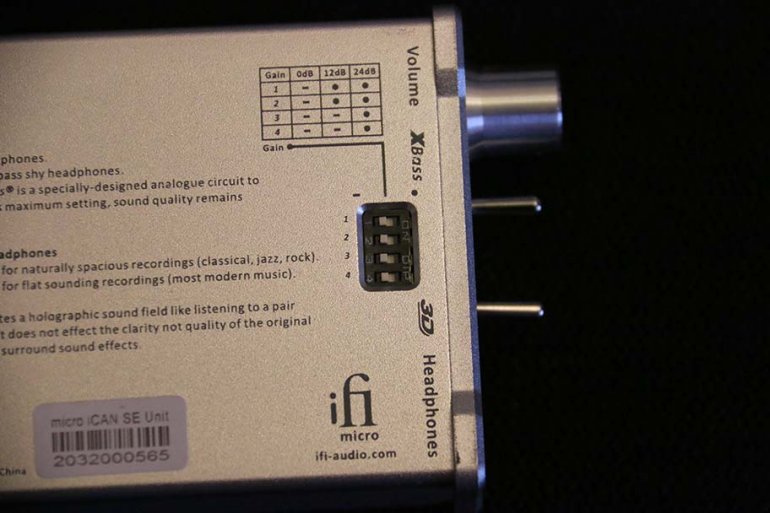
And while we’re on the subject: for all its solid build and unique silhouette, there’s no denying that some elements of the design here are a mess. The bottom of the unit is not only home to the gain switch, but also to a host of marketing copy. We cannot think of a single incident – really, not one – where we’d want a list of what the amplifier can do written on its surface. That’s what manuals are for. Even though it’s hidden most of the time, it feels like iFi is trying just a little too hard, including placing a bunch of obnoxious logos on the casing. This cavalier attitude to labelling goes further, too, with indicator text shoved almost haphazardly next to the individual controls. Some of it doesn’t make sense, either. To maximise the bass boost, you position the otherwise faultless toggle in the center – but to do the same for the stereo switch, you need to push it all the way to the top. It’s a minor niggle, but an annoying one. Fortunately, this appears to be something that iFi have fixed for one of the newer models, the xDSD, which we will be reviewing soon – it not only boasts a new shape and new controls, but seems to have gotten rid of the marketing copy.
There is also a major design oversight in how the iCAN SE relates to its partner, the iDAC2 (full review here). They have an identical build, and are the same size and shape. The first thing we tried to do with them – the first thing almost anybody would try to do with them – is stack them on top of one another. It didn’t work. We could position the one so it stayed in place on top of the other – just – but it was very clear that it could slip off at any moment, and hadn’t been designed with this in mind. That’s a bit of a fail. In functional terms, the amplifier works extremely well. We’ve got no complaints there - and as we said, we do love its distinctive shape. But the masses of text that swamp the metal shell detract from what should be a landmark product.
(UPDATE: It's been pointed out to us that iFi do make a dedicated rack/component shelf to hold all their micro/nano products. We still think the amp/DAC/etc should be stackable on their own, but we're happy to correct the error.)
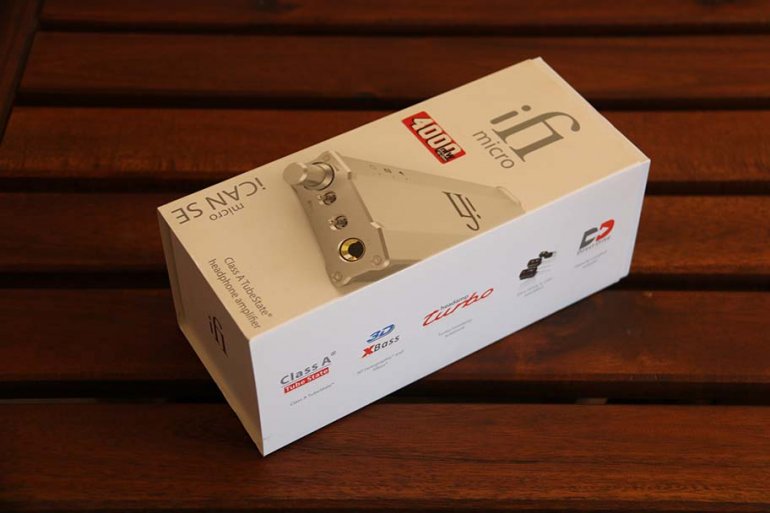
We admit: iFi surprised us a little here. Most amplifiers come with the power cable, and that’s it. That’s your lot. You supply the other cables, the headphones, the sound source. So imagine our surprise when we opened the packaging to discover that our little iCAN SE came bundled with a purple RCA cable – a short one, to be fair, but short is a lot longer than non-existent. It’s a great touch, and it made us warm to both the company and the amp. It’s also something of a policy with iFi that this is included – you’ll see an identical thing on the company’s far more popular iDSD Black Label model. Beyond that, you get a power cable, which comes with a wall wart designed to reduce noise. The manual comes on a strangely-folded bit of cardboard, but it’s fairly self-explanatory, and gets the job done.
Here’s something weird that annoys us: Boxes where the top and sides completely cover the interior, leaving you to fiddle and winkle out the internal compartments, or shake it over table while you wait for the air to give you a bit of purchase. It’s a strange thing, we know, but more companies are guilty of it then we’d strictly like. Not iFi. God knows what wizardry they’ve got going on with this box, but it slides off neatly and quickly. It’s a very small thing, but a welcome one. Slide off the lid, and the iCAN SE is nestled in a white cardboard insert, with the cables beneath. Like the manual, it gets the job done.
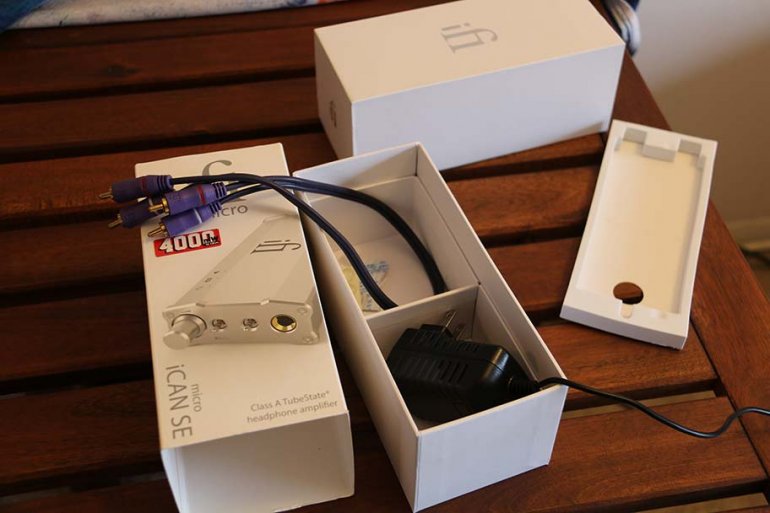
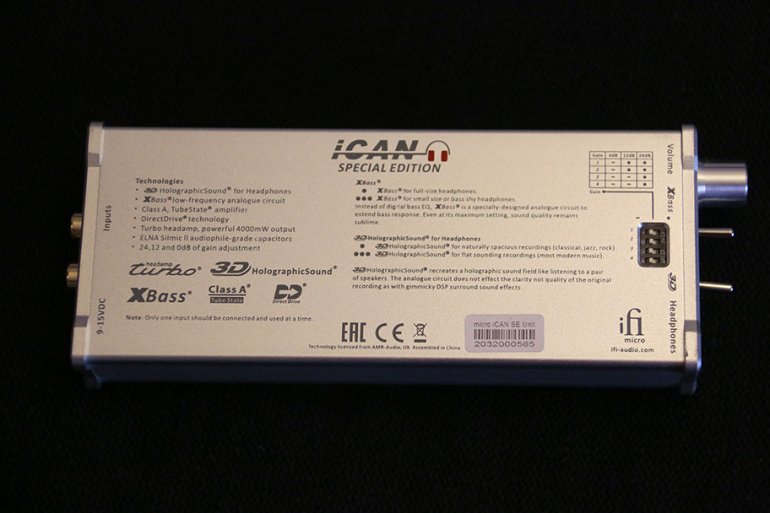
| Amps | Price | Weight | Dimensions | RHI* | WPC** | DAC*** |
|---|---|---|---|---|---|---|
| iFi Audio micro iCAN SE | $299 | 7.7oz | 6.5" x 2.5" x 1" | 10-600Ω | 4/16Ω | No |
| Schiit Valhalla 2 | $349 | 7lbs | 9" x 6" x 3.25” | 28-600Ω | 0.18/50Ω | No |
| OPPO HA2 SE | $564**** | 6.2oz | 5.4" x 2.7" x 0.5" | 10-300Ω | 0.22/32Ω | Yes |
| Bravo Audio V2 | $66 | 1lb | 3.1” x 3.1” x 1.7” | 20-600Ω | Unknown | Yes |
| iFi Audio micro iDSD | $449 | 7oz | 7" x 2.6" x 1.1" | 8-600Ω | 1.56/64Ω | Yes |
*RHI = Recommended Headphone Impedance
**WPC = Watts Per Channel
***DAC = Digital-to-Analog Converter
****Currently selling used for $564
For more in-depth specs, see iFi Audio's product page.
Want Even More Master Switch? Sign Up For Our Weekly Newsletter!
There are plenty of very workable alternatives to the idiosyncratic micro iCAN SE. The Schiit Valhalla 2, for example. It costs a bit more, but then again, it offers quite a bit, too. Not only do you have access to the four tubes, but you can also use this compact unit as a preamp.
We’ll be honest: we prefer this one to the iCAN SE. We think it gives you a staggering amount for your money, and it doesn’t have the same design quirks. But sound wise, the two are comparable, and we think the iCAN SE may even have the edge – just a little. If you have the extra money, we say go for this one, but you’ll be very happy with either. The Valhalla costs a little bit more, at $349 to the iCAN SE’s $299.
We already mentioned the OPPO HA-2SE. This portable powerhouse has at least one major advantage on the iCAN SE, in that it packs both an amplifier and a DAC into its leather and metal frame. It also has a couple of other nifty tricks, like acting as a portable power bank for your phone. We have to say that we prefer the sound of the iCAN SE, and we think that iFi made the right choice by shipping the DAC in a separate unit. But if you can spend $20 more, and you want something that is more amenable to being taken on the go, then spring for the HA-2SE. Just don’t say we didn’t warn you about that leather cover. And by the way, as we said before, you will definitely pay more for this now.
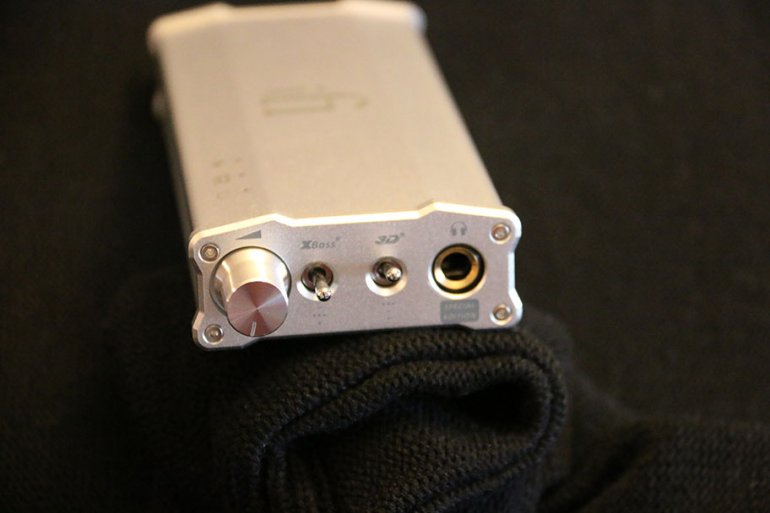
If you want a genuinely different alternative, try the Bravo Audio V2. We’ll sing the virtues of this little monster until the day we die. Why wouldn’t we? It’s a gorgeous, cute little tube amp, highly affordable, with great sound considering the price. Admittedly, the build quality and audio clarity isn’t a patch on the iCAN SE, but it does offer a similar experience. If you’re strapped for cash, but still want to experience some tube goodness, give Bravo’s little beast a go. Just watch out - it can be quite fragile, and that cool little tube is exposed to the elements. Don’t drop it.
iFi make plenty of excellent amps and DACs, and one of the most popular is the micro iDSD. This is decidedly more expensive, at $449 new (the iCAN SE is $299) but offers quite a bit more, and has become one of the company’s most exceptional models. It’s a combination amp/DAC, with a digital input and plenty of functionality, all wrapped up in the same coffin shape. You get some additional controls, as well as additional power, and the sound is superb. It’s expensive, to be sure, but as an in-the-box solution, it works very well indeed.